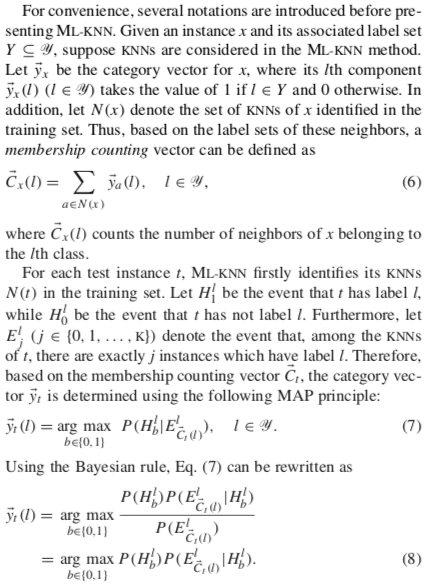Multi-label learning originated from the investigation of text categorization problem, where each document may belong to several predefined topics simultaneously. In multi-label learning, the training set is composed of instances each associated with a set of labels, and the task is to predict the label sets of unseen instances through analyzing training instances with known label sets.
This algorithm is created by Min-Ling Zhang, Zhi-Hua Zhou in Nanjing University in 2007, Our group use it to predict drug activity and our paper is published in Front. Genet., DOI: 10.3389/fgene.2019.00474. We also make a online website which enables you to predict your drugs' activity for a single one or in batch.
In this repo, a R-version MLKNN algorithm which specificlly focuses on drug prediction is provided and the original paper can be found in this repo too.
Machine learning; Multi-label learning; Lazy learning; K-nearest neighbor; Drug activity prediction;
MLKNN.R: Main program to compute probabilities.
cv.MLKNN.R: Performing cross validation on dataset.
HammingLoss.R: Hamming loss: evaluates how many times an instance– label pair is misclassified, i.e. a label not belonging to the in- stance is predicted or a label belonging to the instance is not predicted.
AveragePrecision.R: Average precision: evaluates the average fraction of labels ranked above a particular label y ∈ Y which actually are in Y.
Coverage.R: Coverage: evaluates how far we need, on the average, to go down the list of labels in order to cover all the proper labels of the instance.
OneError.R: One-error: evaluates how many times the top-ranked label is not in the set of proper labels of the instance.
RankingLoss.R: Ranking loss: evaluates the average fraction of label pairs that are reversely ordered for the instance.
https://cs.nju.edu.cn/zhouzh/zhouzh.files/publication/pr07.pdf

